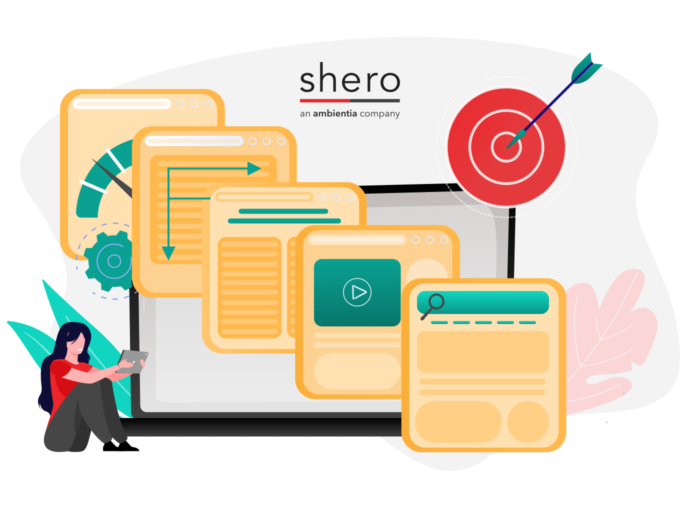Use Recurring Revenue Models to control revenue fluctuations before, during, and after a recession.
Regardless of what the government calls it — economic downturn or recession — there’s no denying that high inflation, mass layoffs, and increased costs of living are forcing consumers to reduce spending.
The numbers show that when inflation is high, consumers typically spend less.
In fact, Jungle Scout’s Consumer Trends Report states: “72% of consumers say rising inflation has affected their spending on consumer goods.”
When customers spend less money, unprepared businesses can see some slowing, and others fail.
But your business doesn’t have to be one of them.
To succeed, you need more than a backup plan; you need a solid strategy to help maintain and grow revenue.
According to “How to Survive a Recession and Survive Afterward,” during past recessions — while 17% of businesses failed — 9% outperformed the competition, growing 10% in sales and profit.
How?
With a well-planned, recession-resistant business strategy.
However, one such strategy — the recurring revenue model — can stabilize sales fluctuations by generating consistent, predictable revenue streams.
Not sure what recurring revenue is or how it can help your eCommerce business thrive in these challenging economic times?
In this article, we’ll explain everything you need to know to get started with recurring revenue.
Sound good? Let’s get started.

Table of contents
What is a recurring revenue business model?
In a recurring revenue business model (RRBM), customers pay for access or ownership to products or services upfront or at regular intervals (weekly, monthly, quarterly, or yearly). Amazon’s monthly or yearly Prime Membership are examples of this model.
Recurring revenue models work well for customers and businesses alike. For example, customers get the convenience of hassle-free shopping, along with discounts, exclusive offers, and bonuses, etc. Businesses generate consistent, predictable revenue while building long-term relationships with customers.
Advantages of Recurring Revenue
While there are many advantages to recurring revenue, here are a few:
Increased revenue, decreased cost
You’ll have more opportunities to upsell and cross-sell throughout the customer lifecycle. Instead of a one-time sale, you will get recurring revenue, which can increase overall revenue, cash flow, and profits. And at the same time, you’ll lower your customer acquisition costs since you’re servicing existing customers, which costs much less.
Consistent, predictable revenue
Not only can you increase revenue, but you will also have more consistent predictable revenue. Take Masterclasses.com. They only offer yearly subscriptions. Why? They don’t have to worry about monthly churn and can more accurately forecast revenue.
Better customer retention and loyalty
With one-time sales, there’s no relationship; it’s transactional — and you can miss opportunities to connect and engage with customers long-term. Customers who trust your business are more likely to sign up for subscriptions. Once a relationship is established, you’ll have more opportunities to build long-term relationships and earn customer loyalty.
Access to more customers
You can expand your customer base with flexible pay subscriptions — like freemium to premium. New customers can try your products for free and upgrade to access more features. Previously out-priced customers can get full access for a more affordable monthly fee, even if the total price is more.
Differentiate yourself from the competition
A unique subscription product offering might be enough to differentiate your business from the competition. From packaging to products, you’ll have the opportunity to wow your customers — and set your business apart — every step of the way.
Disadvantages of Recurring Revenue
Recurring revenue is not without its disadvantages; here are a few to consider:
1. Churn management
Churn, the rate customers unsubscribe from a service, can be challenging to manage, especially in the beginning. Customers churn for different reasons, from not being happy with the service to changes in personal finances. Plus, subscription fatigue is real. Customers who have too many subscriptions and aren’t getting enough value from those services may cancel.
That said, there are many things you can do to minimize churn. Most subscription apps have in-app solutions to retain subscription levels, like giving customers the option to pause — instead of cancel — subscription services.
2. Revenue model management
Balancing multiple revenue models at a time can be challenging, especially for new eCommerce businesses. With added revenue streams comes additional work. But when done right, new revenue streams can not only help your business survive tough economic times, but it can also be a very lucrative long-term strategy.
3. Complex revenue, resource, and tax tracking
From subscription cycle management to resource planning to tax implications, you’ll need to consider the impact on your business — and its growth. With its current resources, can your business handle all that comes with these new income streams? If not, are you prepared to grow and scale?
4. Supply Chain, Inventory, and Shipping Challenges
Under normal circumstances, managing logistics, customer demand, and inventory shortages can be complex. However, during difficult times — like pandemics, wars, and recessions — getting products from manufacturers to customers can be wrought with issues.
5. Payment processing failures
Customers’ credit cards can fail for many reasons — not just insufficient funds. Sometimes it’s customer error, and, at other times, it’s technical issues. Remember, payment processing is part of the customer experience. A negative customer experience — especially in the checkout stage — can be death to a growing eCommerce business. To customers, business-side payment-processing issues could signal more significant operational problems. So be sure to choose a reliable recurring billing service provider with an excellent reputation.

How to Create a Recurring-Revenue Business Model
Creating the right recurring revenue income stream will take time, creativity, and planning. Follow the steps below to ensure your new recurring-revenue stream is the best fit for your customers and business.
STEP 1: Choose a Recurring-Revenue Model (RRM)
Adding a recurring-revenue stream to your eCommerce business makes financial sense. To maximize success, choose a stream that complements your core product offerings.
eCommerce Subscription Models
There are three eCommerce subscription models: replenishment, curation, and access. In these models, customers subscribe to have products auto-shipped at pre-determined intervals (weekly, bi-weekly, monthly, quarterly, or yearly).
Which is best for your business?
Well, that depends on your products, customers, and business goals.
Let’s look at all three:
1. Replenishment Subscription Model
Customers sign-up or subscribe to replenish day-to-day essentials, like razors, beauty products, and prescriptions, usually at discounted prices or to get other incentives. Replenishment is an excellent option for customers who value convenience and want set-it-and-forget-it shopping.
Examples: Amazon’s Subscribe and Save (General), Dollar Shave Club (Toiletries), and HelloFresh (Food).
2. Curation Subscription Model
In the eCommerce space, curation subscription models are popular. Why? Customers love trying hand-picked products based on their preferences. Because these boxes are curated, they require more effort to execute but command higher subscription rates.
Examples: BirchBox (Beauty/Grooming), Scribble (Writer’s Gifts), and StitchFix (Clothing)
3. Access Subscription Model
Access subscription models give customers access to online or streaming services for a fee. With a monthly subscription, customers can access exclusive online content. For example, America’s Test Kitchen offers subscription-based online cooking classes to complement its cookbooks and cookware.
This model can work for a variety of eCommerce stores.
Sell sporting gear, like fishing poles? Teach online bait-and-tackle and fishing classes.
Or, if you sell personal protection equipment, teach online self-defense classes.
If you have information, classes, or digital products that complement your core offerings, generate more revenue with access subscriptions.
Examples: America’s Test Kitchen, Michaels, Pet’s Mart
Memberships
Memberships are paid communities where members can access exclusive resources, like classes, videos, courses, digital products, and more. They provide customers with value-added services that support your products.
For instance, you can sell vitamin or create exercise and coaching memberships to help your customers achieve their health and fitness goals.
Examples: Beach Body, Patreon, and Craftsy
Alternatively, you could start a discount membership, where customers get tiered discounts based on purchases during the year.
Loyalty programs
An eCommerce loyalty program rewards customers — with points, discounts, gifts, or other incentives — for repeat purchases in your eCommerce store or social media engagement. Customers love incentives, and loyalty programs can increase profits and customer retention. How much? Well, “increasing customer retention by 5% increases profits by 25% – 95%” (Reichheld of Bain and Company).
Examples: Starbucks Rewards, Macy’s Star Rewards, REI Co-Op
Referrals
Don’t do all the marketing yourself. Instead, let your customers help — and reward them for it.
For instance, with referral marketing you’ll expand reach through satisfied customers. You get high-quality leads based on valuable word-of-mouth marketing, and customers get incentives from their favorite eCommerce stores. It’s a win-win that works. According to Nielson, customers referred by friends spend 4X more — that’s the power of friend-endorsed brands.
Example: Referral Candy, Referral Rock, PartnerStack
STEP 2: Discuss Your New Recurring-Revenue Model with an Accountant
When it comes to the financial health of your business, do your research. RRMs make accounting functions, like forecasting, easier, so it might be tempting to handle the accounting yourself but don’t. An accountant specializing in eCommerce can advise you on the best way to set up your new revenue stream to avoid tax pitfalls. Better to be proactive rather than reactive.
STEP 3: Choose a Recurring Revenue App or Service
To choose the best recurring revenue app for your business, consider your customers first. Then, your revenue goals and create a plan to get there. Research each provider thoroughly to ensure the solutions meet your needs. When you’re ready, book a demo or a walkthrough. Once you’ve gathered enough information, you’re prepared to make an informed decision.
Skip ahead to our app recommendations, or keep reading
STEP 4: Launch Your Recurring-Revenue Business Model
Before you launch your subscription, test to make sure everything is working. Your test should include several subscription scenarios — walkthrough each like a customer would. Once testing is complete, and you’re satisfied with the implementation, you’re ready to launch.
Need help? Contact us. We’ll work with you to create a digital strategy that allows you to sell with confidence.
How to Calculate Recurring Revenue Return on Investment (ROI)
Now that you know what recurring revenue is, let’s calculate ROI. There are two ways to calculate eCommerce recurring revenue (1) monthly recurring revenue (MRR) or (2) annual recurring revenue (ARR):
Calculating eCommerce Monthly Recurring Revenue (MRR)
Calculating the MMR requires you to have some data points. Once you have them, calculating monthly recurring revenue ROI is a matter of plugging the numbers.
For MMR, you’ll need the following data:
- New customer subscription revenue
- Existing customer subscription revenue
- Fees from existing customers (any vendor fees for things like upgrades)
- Loss from churned customers
Now that you have these numbers, let’s move on to calculating ROI:
Step 1: Add
New customer subscription revenue + existing customer subscription revenue
Step 2: Add
Fees from existing customers (vendor fees) + churned customer revenue loss
Step 3: Subtract
Total from Step 1 – Total from Step 2
Step 4: Calculation = Monthly Recurring Revenue (MMR)
Calculating eCommerce Annual Recurring Revenue (ARR)
For the ARR, take your MMR number and multiply that x 12.
MMR x 12 = ARR
With these two formulas, you can calculate monthly recurring revenue (MMR) and annual recurring revenue (ARR) for eCommerce stores.

5 Best Subscription Apps for eCommerce Stores
Choosing the best subscription apps doesn’t have to be complicated. To get started, we’ve listed a few of the best here:
1. Recharge
Price: Launch for free. Upgrade to Pro for $499/month to get advanced features and customizations.
With ReCharge, quickly enable subscription offers to your customers. Increase customer lifetime value (CLTV), reduce churn, and improve customer loyalty.
2. Recurly
Price: $199/month up to $500K in revenue; Professional and Elite options available.
With Recurly’s quick implementations, go live in weeks — so you can grow your revenue fast. Recurly is a flexible subscription management and billing solution that can reduce churn and help build customer relationships affordably.
3. Smartrr
Price: Free trial. Plans: Launch, $99/month; Grow, $299/month; Excel, $499; all plans have +1% subscriber GMV*
Convert customers into subscribers with this native Shopify checkout app. Engage customers with subscription management tools and reward customers with perks like early-access products and subscriber discounts.
4. SubscribePro
Price: $499/month
With easy subscription management — for auto-ship, auto-replenishment, subscription boxes, and recurring billing — SubscribePro is an all-in-one solution. Reduce churn with automatic churn handling, including failed subscription management.
5. Appstle Subscriptions & Loyalty
Price: Free 30-day trial with $0 transaction fees. Plans: Business, $20/month; Business Premium, $100/month; and Enterprise, $500/month.
Appstl Subscriptions & Loyalty is Shopify’s most popular and highest-rated subscription app. Easy plug-and-play installation and works with most themes. Sell physical or digital products with this solution. Excellent customer service.
Now that you understand eCommerce recurring revenue streams, you have the power to manage, control, and grow your income streams — no matter what’s going on in the economy.
Need help? Contact us for a free consultation today.
Gentian, CSO and co-founder of Shero Commerce, guides the company and client digital strategies. He's an expert in technical SEO, Inbound Marketing, and eCommerce strategy.






